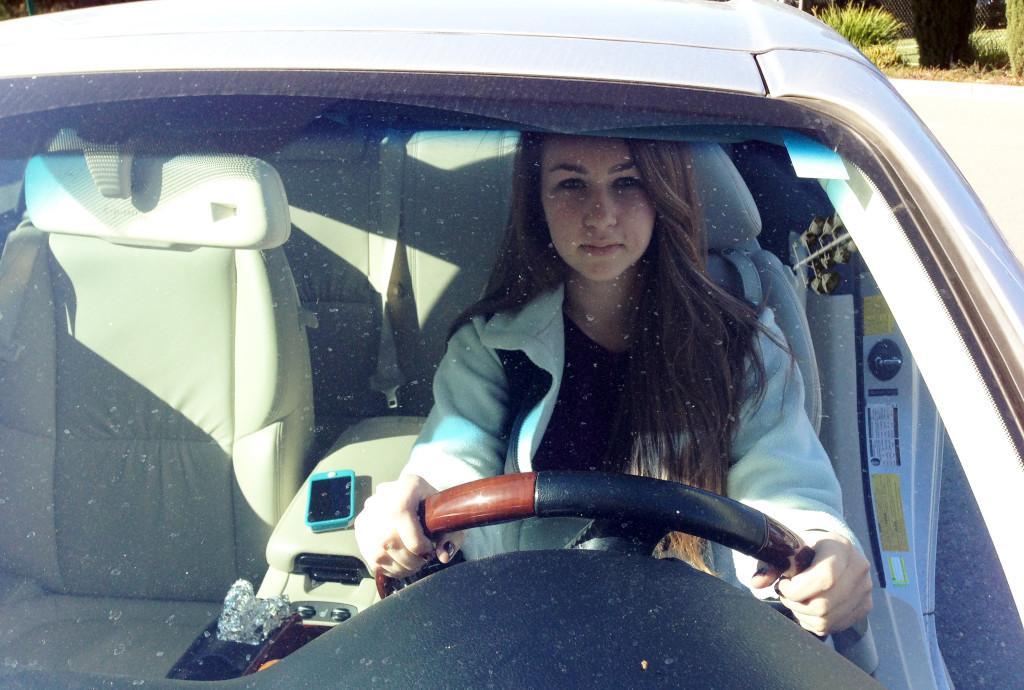This week, the Living with Intent Focus and Enthusiasm (L.I.F.E.) board stressed the importance of cautious driving. The following are some tips to stay safe on the road for all drivers from beginners to the experienced.
1. Get rid of distractions
Nowadays phones are everywhere and used constantly, whether for texting, calling, or even playing games. To get rid of the temptation to answer your phone or text your friends back, put your phone in the truck or in the glove compartment when you drive. Or, if it absolutely vital that you reply, find a safe parking spot away from the moving traffic to continue your conversation.
Although loving music is harmless, listening to it with headphones on or even with a loud volume while you are driving is extremely distracting and more importantly dangerous to yourself and other drivers. Try turning down the music so you can hear the sirens behind you. If you enjoy listening to the music on your iPod rather than the radio, invest in a car connector which streams music from your iPod or mp3 straight through the speakers in your vehicle.
2. Be aware of your surroundings and your car
Most accidents occur because people are not aware that another car is right beside them. In order to avoid this situation, be aware of your surroundings. For example, when driving on a freeway try to look further out into the distance rather than just the car in front of you. This step can help you anticipate if the car in front of you stops suddenly and forces you to do the same.
A good rule to follow is to be at least three seconds apart from the car in front of you when you are on a local road and five seconds away on the freeway. For instance, when you see the car in front of you pass a highway sign, begin counting “One Mississippi, two Mississippi, three Mississippi, etc.” If you pass that same sign before you finish counting to five then you are too close and should slow down to avoid accidents.
In addition, always remember to check your blind spots despite what you may or may not see in the mirror before you change lanes or turn. Bikers or speeders tend to zoom past, expecting that you will yield to them.
Cars are all made by different companies in different countries with different materials. Thus, parts of one car are not similar to parts of another car of another brand. When trying out a new car, take some precautions and test out the car’s braking distance, keeping in mind that the braking distance is longer when it is raining and even longer when it is snowing.
3. Plan ahead
Laws such as speed limits are put in place so you drive in a safer environment and avoid accidents. Although many do not wish to speed, fear of being late to class or a meeting might cause that bad habit to occur. So plan ahead!
Wake up a little earlier so you do not have to put yourself and other drivers in danger when you speed. Granted, there will always be a time when your alarm clock does not go off or you just forget.
In that case, before you go speeding off at 85 mph on a 65 mph zone, park somewhere safe out of the way of traffic and call your boss or the school and tell them that you will be a few minutes late. If you decide not to or if it does not help your situation, it is still better to practice safe driving than to risk getting others or yourself in danger.
Being a safe driver not only helps yourself, but also keeps everyone around you safe. If you want more tips on how to be a safe driver, go to http://www.adeptdriver.com/, a site geared towards making teens and adults more aware of their surroundings and and creating a safer driving environment.




![LALC Vice President of External Affairs Raeanne Li (11) explains the International Phonetic Alphabet to attendees. "We decided to have more fun topics this year instead of just talking about the same things every year so our older members can also [enjoy],” Raeanne said.](https://harkeraquila.com/wp-content/uploads/2025/10/DSC_4627-1200x795.jpg)


















![“[Building nerf blasters] became this outlet of creativity for me that hasn't been matched by anything else. The process [of] making a build complete to your desire is such a painstakingly difficult process, but I've had to learn from [the skills needed from] soldering to proper painting. There's so many different options for everything, if you think about it, it exists. The best part is [that] if it doesn't exist, you can build it yourself," Ishaan Parate said.](https://harkeraquila.com/wp-content/uploads/2022/08/DSC_8149-900x604.jpg)




![“When I came into high school, I was ready to be a follower. But DECA was a game changer for me. It helped me overcome my fear of public speaking, and it's played such a major role in who I've become today. To be able to successfully lead a chapter of 150 students, an officer team and be one of the upperclassmen I once really admired is something I'm [really] proud of,” Anvitha Tummala ('21) said.](https://harkeraquila.com/wp-content/uploads/2021/07/Screen-Shot-2021-07-25-at-9.50.05-AM-900x594.png)







![“I think getting up in the morning and having a sense of purpose [is exciting]. I think without a certain amount of drive, life is kind of obsolete and mundane, and I think having that every single day is what makes each day unique and kind of makes life exciting,” Neymika Jain (12) said.](https://harkeraquila.com/wp-content/uploads/2017/06/Screen-Shot-2017-06-03-at-4.54.16-PM.png)








![“My slogan is ‘slow feet, don’t eat, and I’m hungry.’ You need to run fast to get where you are–you aren't going to get those championships if you aren't fast,” Angel Cervantes (12) said. “I want to do well in school on my tests and in track and win championships for my team. I live by that, [and] I can do that anywhere: in the classroom or on the field.”](https://harkeraquila.com/wp-content/uploads/2018/06/DSC5146-900x601.jpg)
![“[Volleyball has] taught me how to fall correctly, and another thing it taught is that you don’t have to be the best at something to be good at it. If you just hit the ball in a smart way, then it still scores points and you’re good at it. You could be a background player and still make a much bigger impact on the team than you would think,” Anya Gert (’20) said.](https://harkeraquila.com/wp-content/uploads/2020/06/AnnaGert_JinTuan_HoHPhotoEdited-600x900.jpeg)

![“I'm not nearly there yet, but [my confidence has] definitely been getting better since I was pretty shy and timid coming into Harker my freshman year. I know that there's a lot of people that are really confident in what they do, and I really admire them. Everyone's so driven and that has really pushed me to kind of try to find my own place in high school and be more confident,” Alyssa Huang (’20) said.](https://harkeraquila.com/wp-content/uploads/2020/06/AlyssaHuang_EmilyChen_HoHPhoto-900x749.jpeg)














